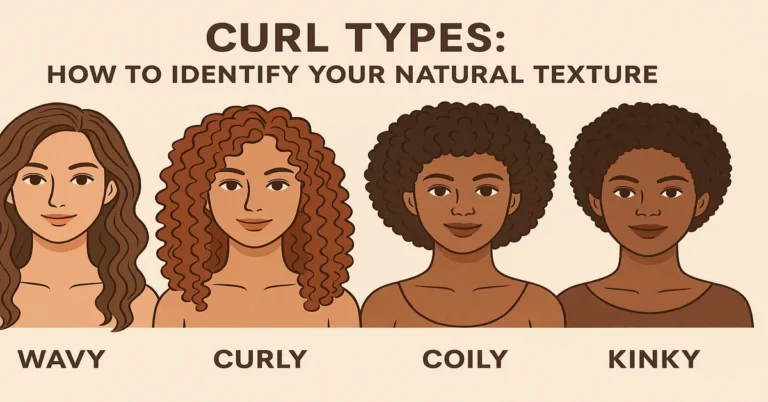Raising Stronger Kids: The Surprising Power of Little Ninjas in Early Childhood Development
In today’s hyper-digital world, where children’s attention is often absorbed by screens and virtual interactions, a quiet revolution is happening inside local gyms, school auditoriums, and community centers. It’s called the “Little Ninjas” movement—a rapidly growing philosophy that combines martial arts, mindfulness, and life skills to shape young children into confident, respectful, and physically active individuals. These programs are not just about kicks and punches; they are designed to instill core values like discipline, focus, empathy, and perseverance—all while keeping kids joyfully engaged.
Within the first few sessions, parents often witness something remarkable: children who were once shy, distracted, or even hyperactive, now standing still with confidence, listening intently, and following structured commands with pride. The magic of Little Ninjas isn’t just physical—it’s deeply transformative and rooted in developmental science.
What Is “Little Ninjas”?
“Little Ninjas” refers to structured martial arts programs tailored specifically for children aged 3 to 7. The name evokes images of agility, discipline, and fun. While martial arts may traditionally bring to mind competitive sports, breaking boards, or complex forms, Little Ninjas shifts the focus from combat to character.
These classes blend basic martial arts moves—such as blocks, kicks, and stances—with early childhood development principles. The result? A curriculum that helps improve gross motor skills, listening ability, emotional regulation, and social behavior, all under the guise of a fun and exciting “ninja training” program.
Most programs are 30–45 minutes long, filled with games, obstacle courses, and drills that feel like play—but carry powerful developmental benefits. Instructors are trained not just in martial arts, but in child psychology and pedagogy, making each class safe, nurturing, and impactful.
Why Parents Are Turning to Little Ninjas
Modern parenting comes with modern challenges. Attention spans are shrinking. Screen addiction is growing. And physical inactivity is becoming a public health concern. According to health organizations, many children fail to meet basic physical activity requirements.
Enter Little Ninjas—a refreshing alternative to traditional sports. Here’s why parents are embracing it:
- Structure with Play: Kids thrive in environments where boundaries meet fun. Little Ninjas offers exactly that balance.
- Discipline without Pressure: Unlike competitive sports, failure is not punished but seen as a learning opportunity.
- Focus Training: Children develop sustained attention—something increasingly rare in early childhood.
- Confidence Building: As kids master new moves, their self-esteem grows.
- Holistic Development: Programs address physical, emotional, social, and cognitive growth simultaneously.
Little Ninjas is less about creating future black belts and more about building resilient, respectful, and emotionally intelligent humans.
Core Components of a Little Ninjas Program
While every martial arts school might put its own spin on the Little Ninjas curriculum, several core components remain consistent across the board. These include:
| Component | Purpose |
|---|---|
| Warm-up & Stretching | Prepares the body and teaches children to care for their physical health |
| Basic Martial Arts | Introduces fundamental moves for coordination and balance |
| Focus Games | Engages attention, listening, and cognitive flexibility |
| Character Themes | Teaches values like respect, courage, kindness, and responsibility |
| Belt Progression | Offers goal-setting and a sense of achievement |
| Parent Involvement | Strengthens home-school connection and behavior reinforcement |
Each class typically integrates a theme of the week—such as “patience” or “honesty”—that’s reinforced through activities, discussions, and even homework assignments designed for reflection and home application.
The Science Behind the Movement
Why are programs like Little Ninjas so effective?
The answer lies in child development science. At the ages of 3 to 7, children’s brains are in a period of rapid growth, particularly in areas that control motor coordination, emotional regulation, and executive functioning. These are the very areas martial arts targets.
- Motor Skills Development: The repetitive, patterned movements of martial arts improve balance, coordination, and muscle tone.
- Neuroplasticity: Structured movement fosters new neural pathways, improving memory, focus, and adaptability.
- Executive Function: Activities that involve listening, stopping, starting, and sequencing boost cognitive control.
- Social-Emotional Learning: Group settings allow children to practice empathy, cooperation, and peer communication.
- Stress Regulation: Mindfulness practices and controlled breathing—often taught even at the Little Ninjas level—help reduce anxiety and tantrums.
When children are taught how to pause, breathe, and respond rather than react, they carry these skills into classrooms, friendships, and family life.
A Day in the Life of a Little Ninja
Imagine walking into a dojo (training hall) on a weekday afternoon. Laughter bounces off the walls. Brightly colored mats line the floor. Children in tiny uniforms (gi) with colored belts file into formation, beaming with anticipation.
The instructor, or Sensei, begins with a cheerful greeting and warm-up. The kids follow with jumping jacks and animal walks—frogs, bears, and crabs—that challenge balance and coordination. The lesson then moves into a ninja move of the day: perhaps a front kick or a low block.
The second half of class is game-based. One popular drill is “Sensei Says,” a martial arts twist on Simon Says that hones listening skills and impulse control. The class ends with a bow, a moment of stillness, and a discussion of the day’s character word: perhaps “respect” or “gratitude.”
It may look like play, but every moment is carefully crafted to support specific developmental outcomes.
Benefits Beyond the Mat
The advantages of Little Ninjas programs extend far beyond martial arts. Teachers report that children enrolled in these programs are often more:
- Attentive in Class
- Respectful of Authority Figures
- Able to Handle Transitions and Disappointment
- Willing to Help Peers and Siblings
- Motivated by Achievement rather than Reward
What makes the transformation powerful is that children feel ownership over their progress. Earning a new belt is a deeply personal accomplishment. Unlike team sports where individual contribution may be harder to gauge, in martial arts, every step forward is visible and earned.
The Role of Parents and Guardians
Parents play a crucial role in the success of Little Ninjas. Many programs encourage parents to participate in specific classes or at least observe. More importantly, they are urged to reinforce lessons at home.
For instance, if the week’s theme is “responsibility,” children may be asked to do a task at home—make their bed or help set the table—and then discuss it in the next class. This home-school connection reinforces consistency and accountability.
Some programs go further, offering parent workshops that teach strategies for maintaining discipline and positive reinforcement techniques in everyday life.
Customization for Special Needs
An increasing number of Little Ninjas instructors are receiving training in adaptive martial arts for neurodivergent children, including those with autism spectrum disorder (ASD), ADHD, and sensory processing challenges.
These specialized classes offer:
- Lower student-to-instructor ratios
- Quiet rooms and reduced sensory stimuli
- Modified instructions and movements
- Visual schedules and supports
Such inclusive programs not only build confidence in children with unique needs but also cultivate empathy among neurotypical peers when integrated thoughtfully.
Choosing the Right Little Ninjas Program
Not all programs are created equal. Parents should look for certain hallmarks of quality before enrolling their child:
- Certified and Background-Checked Instructors
- Clean, Safe, and Welcoming Facility
- Clearly Defined Curriculum
- Reasonable Student-to-Teacher Ratios
- Character Education Integration
- Positive Discipline Philosophy
Trial classes are highly recommended. Observing how the instructor interacts with the children, manages behavior, and explains concepts can provide invaluable insight.
From Little Ninja to Lifelong Learner
Though the Little Ninjas program is geared toward young children, its long-term impact can be profound. Many participants continue into more advanced martial arts training. Others carry the mindset into academics, sports, or leadership roles in their schools.
It is not uncommon to hear a 6-year-old proudly say, “A ninja never gives up,” or “I showed self-control today,” after navigating a conflict with a sibling. The language and values stick.
More importantly, Little Ninjas helps instill a belief in self-efficacy—the idea that “I can control how I behave and improve over time.” That belief can be the single most powerful predictor of a child’s success in life.
The Future of Little Ninjas
As mental health concerns, sedentary lifestyles, and screen dependency rise among children, programs like Little Ninjas may hold one of the keys to healthier generations. Already, forward-thinking schools are partnering with martial arts academies to bring such programming into physical education or after-school enrichment.
Meanwhile, technology isn’t entirely left out. Some programs are offering companion apps where children can track their progress, submit reflection journals, and even watch guided practice videos at home. Done wisely, the integration of tech with tradition can make the experience richer without compromising the core philosophy.
Innovations like these will likely expand access to Little Ninjas for rural, home-schooled, or low-income children—ensuring that all kids, not just the privileged, can benefit from the program.
Conclusion: A Small Uniform with a Big Purpose
Little Ninjas is more than just an activity to keep young children busy. It’s a thoughtfully designed experience that weaves together movement, morality, and mental strength. In a culture where fast gratification and passive consumption often rule the day, this quiet, disciplined practice teaches children to slow down, tune in, and stand tall.
At its heart, the program nurtures little humans into kind, courageous, and capable members of society. And in that transformation, we all stand to gain.
Wouldn’t it be something if the most powerful lessons our children learn didn’t come from a screen—but from a simple bow, a patient breath, and the quiet confidence of becoming a Little Ninja?
Read: https://2amagazine.co/atire-wise/
FAQs
What age group is the Little Ninjas program designed for?
Little Ninjas is typically designed for children aged 3 to 7 years old, focusing on early childhood development through martial arts, movement, and character education.
Does my child need any prior martial arts experience to join?
No prior experience is needed. Little Ninjas is a beginner-level program that introduces martial arts in a safe, playful, and age-appropriate way for first-time learners.
What skills will my child learn besides martial arts?
In addition to physical skills, children learn focus, self-control, respect, confidence, listening skills, and how to handle emotions constructively—valuable both in school and at home.
How often should my child attend Little Ninjas classes?
Most programs recommend 1 to 2 sessions per week, allowing children to build consistency while balancing other activities and rest.
Is the Little Ninjas program suitable for children with special needs?
Yes. Many programs are inclusive and offer adaptive support for children with autism, ADHD, or sensory challenges, often through smaller class sizes and specialized instructors.





